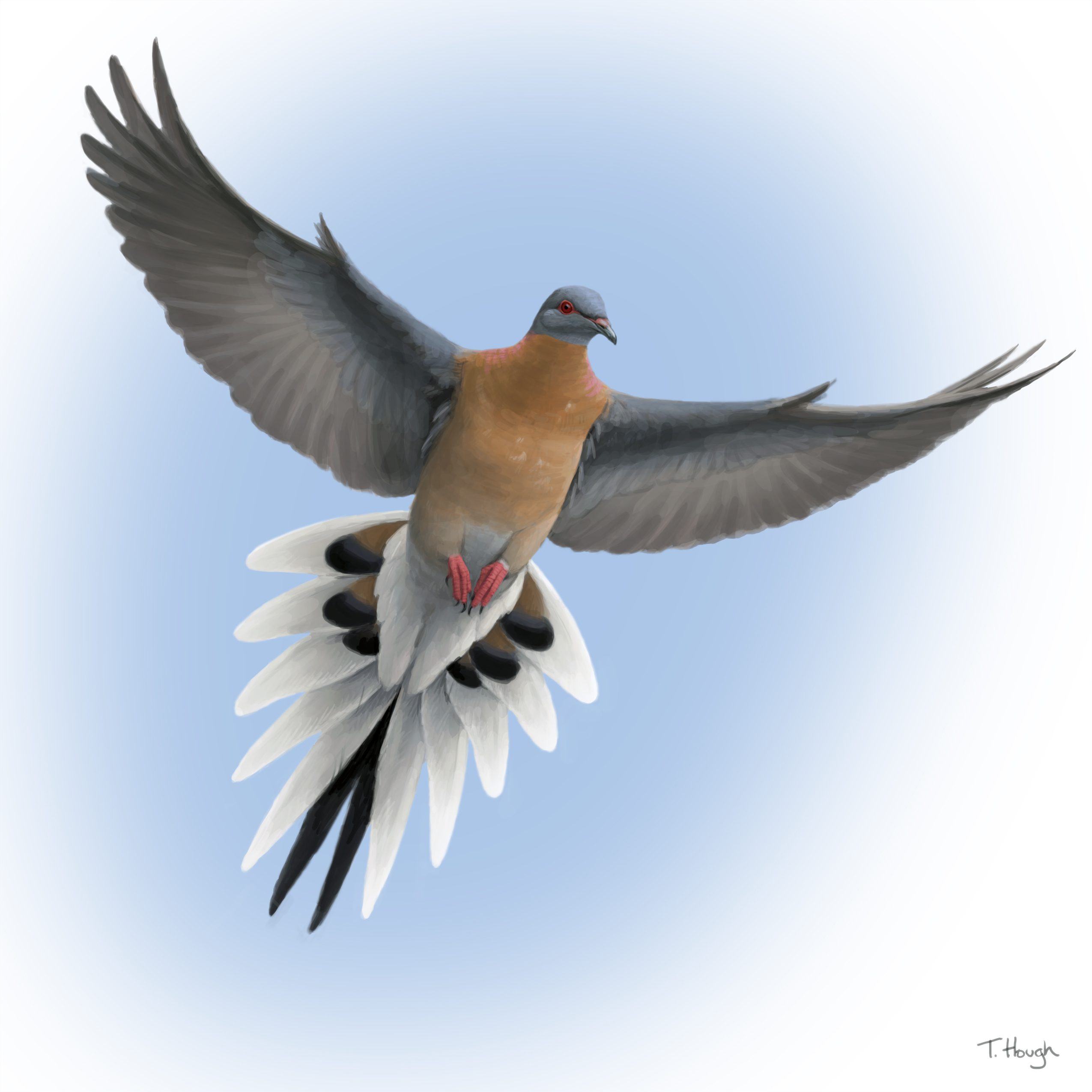


Instead, we use the Band-tailed Pigeon reference genome as a template to map the Passenger Pigeon’s fragmented DNA. It is not possible to assemble the genome of the Passenger Pigeon in the same way we can assemble the Band-tailed Pigeon genome – the ancient DNA of the Passenger Pigeon is too fragmented to obtain a contiguous code. In Silico Genome Research: The Passenger Pigeon Genome Future work will continue to identify the non-coding elements of the transcriptome. Our reference genome is publicly available on the National Center for Biotechnology Information’s public GenBank database. We sequenced RNA from the brain, heart, lungs, liver, kidney, and ovary tissues of one of Sally’s embryonic offspring to identify the protein coding genes of the genome. Different tissues in the body express different subsets of these RNA elements – therefore to discover and map them all we need to sequence RNA from multiple tissues. Birds’ genomes contain ~20,000 encoded elements interspersed on different chromosomes. All these elements in the genome that are processed through an intermediate RNA stage are known as the transcriptome. DNA controls traits by being transcribed (written) into RNA, which is then used by the cell to synthesize proteins and regulate how little or how much protein is made.
#Passenger pigeon code
In order to determine which sections of the genetic code are used to regulate cell functions and to create traits, the RNA needs to be sequenced. The individual genes and gene regulators are not known these must be identified by sequencing the Band-tailed Pigeon’s RNA and mapping them to the genome. However, this genome is simply a string of A’s, T’s, C’s, and G’s. The end product is approximately 1.1 billion base pairs of genetic code. The DNA code was sequenced, and the resulting data assembled computationally to produce the genome of the species.
#Passenger pigeon professional
DNA from fresh Band-tailed Pigeon tissue was obtained from a blood sample from “Sally,” a female Band-tailed Pigeon raised by professional breeder Sal Alvarez. In Silico Genome Research: The Band-tailed Pigeon Genome Regenerating forest habitats are also more bioproductive, generating higher rates of photosynthesis and carbon sequestration. Forestry ecologists now recognize that patchwork mosaic forests support greater diversity of species than even-aged stands of trees. Widespread, asynchronized disturbances produce a mosaic patchwork landscape of different regenerative stages – known as successional stages. Regular, periodic, mild to moderate disturbances are a positive element in forest ecology. Like many forest ecosystems, North America’s Eastern forests rely on disturbance as an integral factor in regenerating forest cycles.

As a result, the project is now not only a model for pioneering de-extinction methods, but it offers a new opportunity to achieve long-term conservation goals for woodland forests in the eastern U.S. Our research revealed the Passenger Pigeon isn’t simply a model species it quite possibly is the most important species for the future of conserving the woodland biodiversity of the eastern United States. The Passenger Pigeon and th e Future of F orest Conservation


 0 kommentar(er)
0 kommentar(er)
